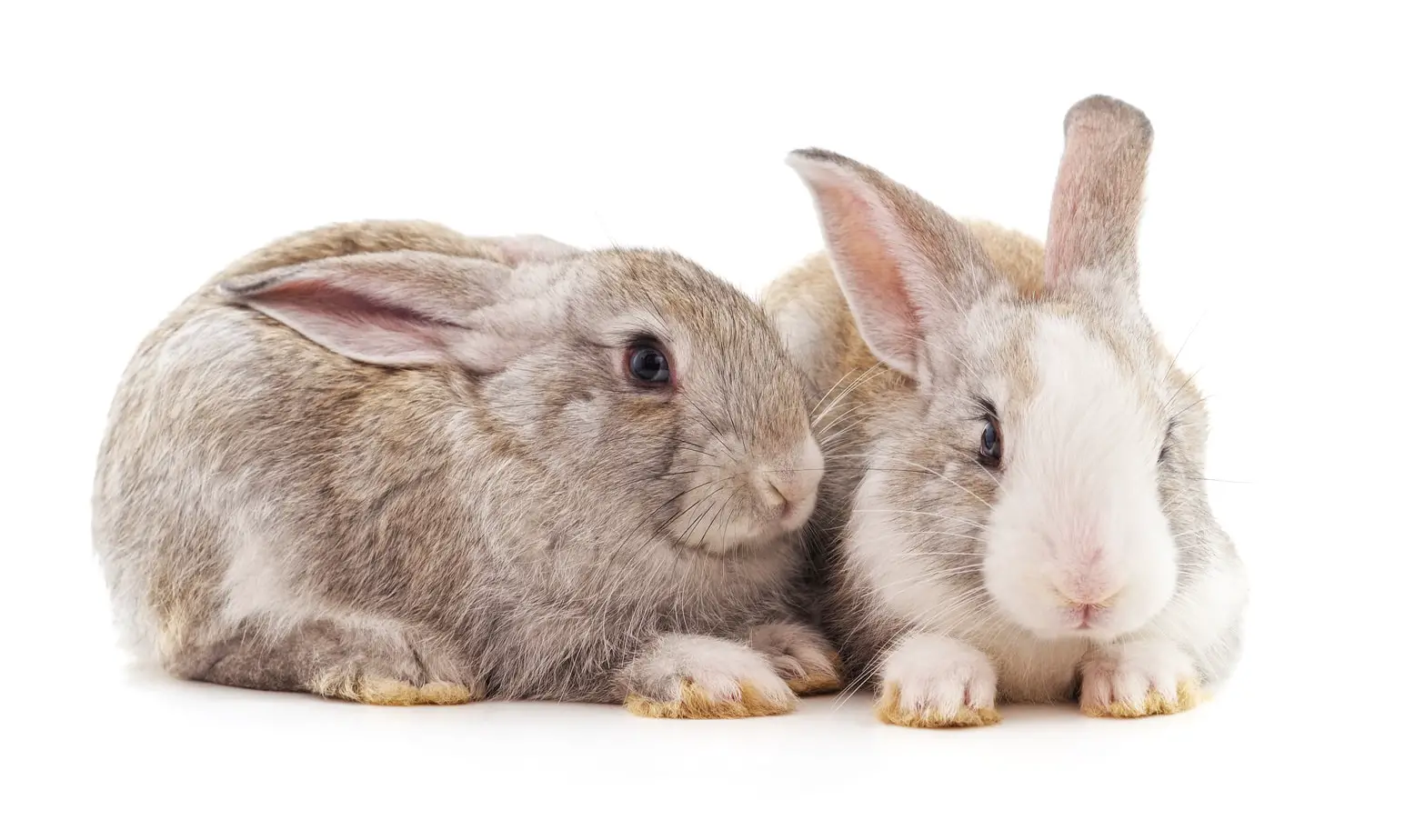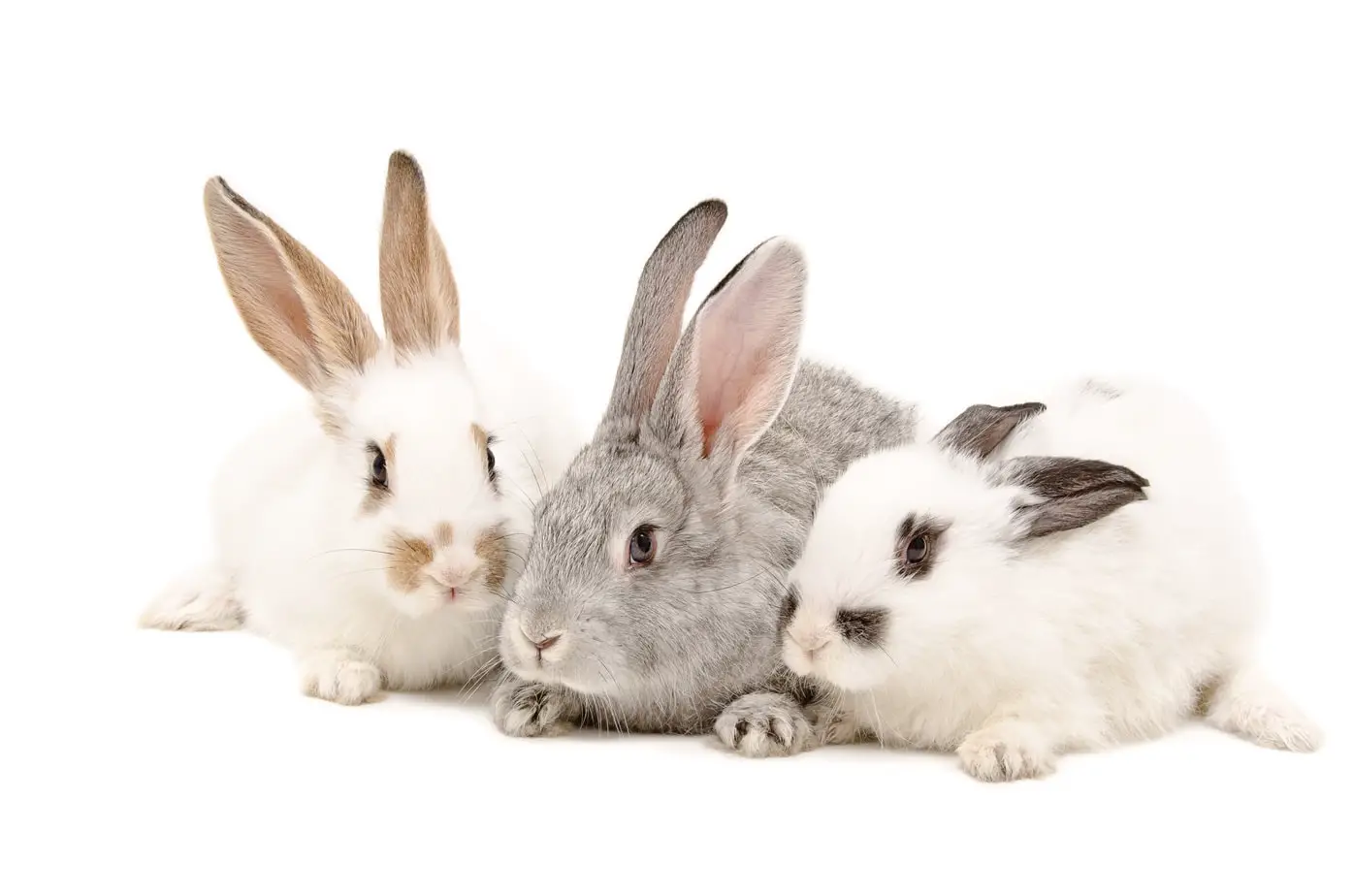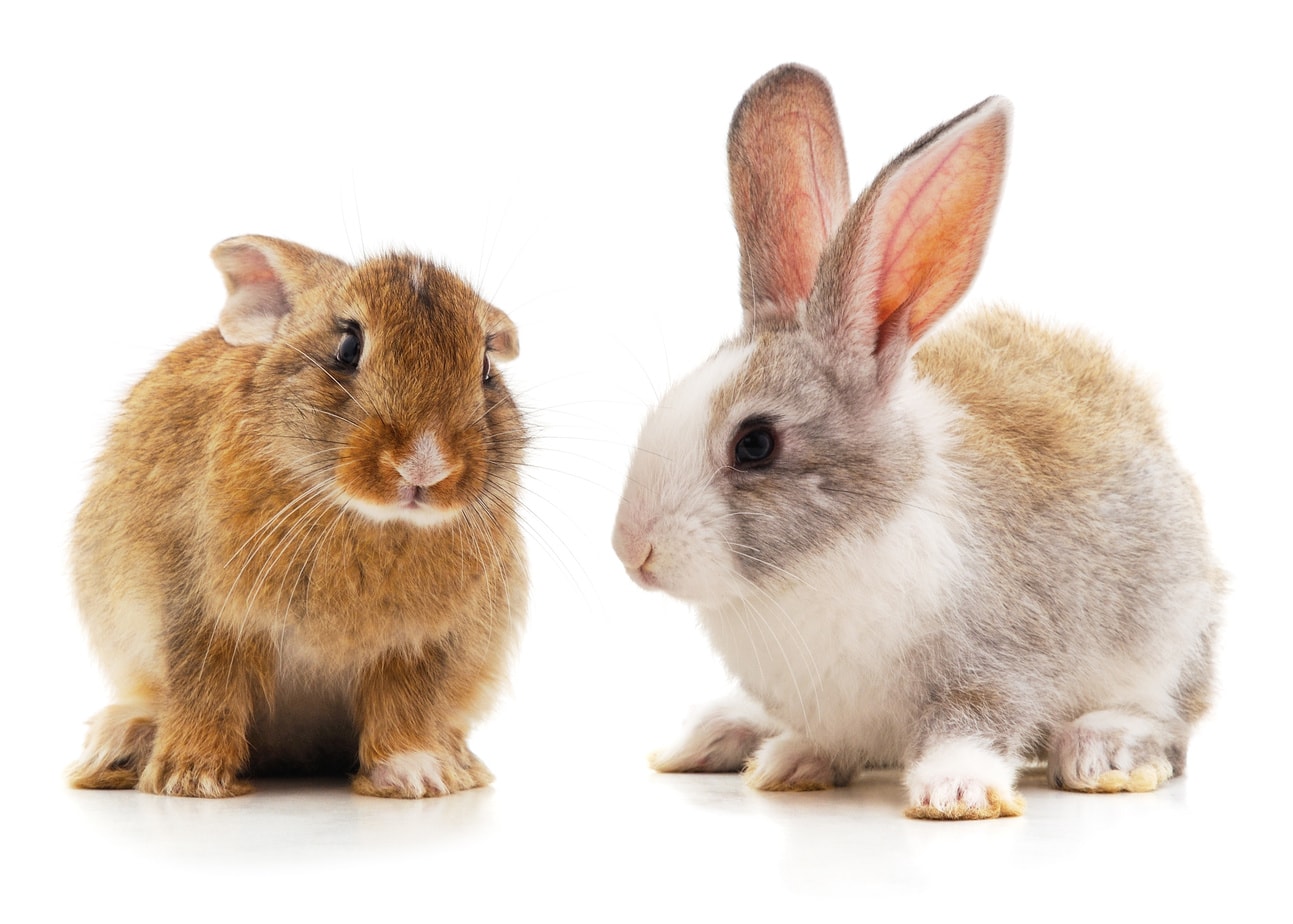
You may be alarmed and at a loss as to how to stop your pet rabbits from fighting. If they are bonded pairs, it can especially be concerning because of the affectionate relationship they are meant to have with another.
Rabbits commonly fight due to hormones, stress, changes in their environment, lack of bonding, or illness. A lot of the time it is rabbits trying to figure out who is the dominant one in the pair. Sometimes it may be best to separate them for a period of time to allow them to calm down and relax.
Look for some of the reasons your rabbits may fight and what you can do about it.
High Levels of Hormones
Hormones dictate rabbits’ personalities if they haven’t been spayed or neutered. Male rabbits especially become territorial of their space or sexually frustrated due to lack of mating, so they will take it out on other rabbits. Female rabbits, while not as severe, may also become more aggressive toward others if they haven’t been spayed.
To ensure your rabbits aren’t doing more damage to each other, make sure their nails are trimmed to the proper length. Just like cats and dogs, rabbit nails need to be groomed on a regular basis. Check out my article How to Care for a Rabbit’s Nails: The Full Guide here.
The remedy? Spaying or neutering them.
The procedures will reduce the stress on the rabbits’ bodies and decrease the chances of fighting. Be sure to give a freshly spayed or neutered rabbit enough time to recover from their procedure. This will ensure that their wounds have properly healed, so in case there is another fight, they won’t be injured.
Male rabbits who have reached sexual maturity and haven’t been neutered in time before their hormones increased will also need to be kept away from female rabbits for several weeks. This ensures that any residual sperm in their system will die off.
It may take a few weeks for your rabbit’s personality to calm down after the procedure, so it’s best to keep bonded pairs close but separated during the recovery and post-recovery time to discourage fighting.
Male-male and female-female pairs typically have a harder time getting along, especially if they aren’t bonded immediately at birth. Their tendency to fight will go up if they haven’t been fixed to assert dominance over the other. Male-female pairs get along best because of this, but only if they’re both sterilized as well.
For any pair, however, neutering and spaying your rabbits will alleviate many problems that may occur between bonded pairs or trios, no matter the sex. Without hormones making them crazy, they’ll be much calmer toward each other.
Have Not Bonded Accordingly

Introducing rabbits to each other can be an intricate and prolonged process.
They need to come together in a neutral space when you’re first letting them get to know each other. In the neutral space, they should be able to interact or eat with each other for a limited amount of time–at least 10 to 20 minutes.
Some neutral spaces may be an empty bathtub, the kitchen, or another room. Car rides can be effective in bonding rabbits because they’re too scared to think of fighting and will likely huddle up together for comfort during the ride.
If they begin fighting, you’ll probably be able to tell that it’s different from playing. Fighting looks like a vicious attack. Rabbits are pro fighters because of their prey species. They’ve needed to fight fast and dirty if their species had a chance of survival.
Rabbits typically aim at the face, belly, bum, or genital area when they fight. When they play, they will likely nip the other rabbit to initiate play or get attention. When you recognize the difference between fighting and playing, you should intervene and separate the fight before it gets too bad and causes irreparable harm to the rabbits’ relationship.
And why do they fight? Well, it’s usually to assert dominance, so if they’re suddenly put in a space together without adequate time to adjust, fighting can occur. Should the fighting continue or worsen, then separate the bunnies and start over the process of slowly reintroducing them to each other. Don’t rush anything or they may start fighting again.
New rabbits that have freshly bonded are trying to figure out who will be the dominant one and who will be the submissive one, so they may fight or mount the other while this is happening even if they like each other’s company. The submissive rabbit may also challenge its status from time to time, which can lead to fighting.
TIP: If your rabbits aren’t getting along, that can cause a mental toll on their health and bodies. Please take the time to consider getting insurance for your pets. Check out my article Pet Rabbit Insurance: Is It Worth It? to learn more about this debated topic.
Lack of Personal Space
Too small of a cage can make rabbits annoyed with each other, so they may lash out and channel their frustrations into fighting.
Check to see if your rabbit enclosures are the proper size for your rabbits. The cages need to be at least five times the size of the rabbit. Anything smaller cramps them, and just like anybody who is in too small of a space for too long with someone else, the results can be explosive.
If you can, try acclimating your rabbits to a rabbit pen. And should your house be too small to fit a pen inside, see if you can let them roam in a gated-off room or in a rabbit-proofed house. The more freedom they’ve been given, the more they can enjoy each other’s company rather than be irritated by it.
Rabbits who don’t get enough exercise or have adequate space won’t have a chance to release their energy properly, which means they’ll take it out on the other rabbits in the enclosure and exacerbate negative emotions through fighting.
Remember that rabbits can simply get annoyed with their buddy, so be prepared to separate one until he has settled down and had some personal time before he’s taken back to be with his mate. The better you know your rabbits, the more you’ll be able to identify their boundaries and responses.
If you end up needing to take your pet rabbits to the vet because of injuries or illness, you’ll want to think about if Two Rabbits Can Share a Carrier? Traveling with multiple rabbits can be difficult, but you want them to be as safe as possible during the transition time.
Illness
A breakout fight may shock you, especially if your rabbits have a great relationship. If your rabbits suddenly begin fighting with little to no prior hints, then check to see if one or both is sick. Illness can cause a rabbit discomfort. When they’re miserable, they don’t want anyone else to associate with them, much like people.
Likewise, a healthy rabbit may pick on a sicker rabbit if they sense weakness due to illness.
In both instances, it’s best to separate your rabbits until the illness is treated. Then you can reintroduce them to each other and see if that has alleviated the fighting problem.
Remember that rabbits hate showing weakness. It’s in their nature to conceal injury or illness up to the point of death, so you may not notice their health decline immediately. If you suspect that your bunny is unwell, check for signs of:
- Lack of energy and appetite
- Constipation or diarrhea
- Decreased grooming habits
- Difficulty breathing, sneezing, or coughing
- Sitting in a hunched position
- Squinted eyes
- Loud teeth grinding unlike happy noises
- Drooling
- Excessively hot or cold ears
- Imbalance
- Disinterest in treats
- Distended stomach
Should you see one or more of these signs, contact your vet immediately for treatment.
Moving From One Place to Another
A sudden change in environment can overwhelm rabbits.
Whether it’s going from a small space to a big space, a big space to a cage, or simply moving from one home to another, rabbits may channel their fear or aggression to bonded mates if they’re feeling scared enough.
If you’ve recently bought or adopted a bonded pair and have moved them into your home, this sort of reaction may occur.
When they have a new cage or enclosure, be sure to put items like blankets and toys in there that already have their scent on them to help the rabbits adjust better. The more familiar they are with their new territory, the calmer they will be. Also ensure that they have some space to escape to when they want to hide, such as a box or a cubby.
Don’t be discouraged when it takes time for your rabbits to acclimate to their new home. Just maintain your patience, and then reward them with treats and praise after they start exploring or settling down to encourage this kind of positive behavior.
How to Know if Bunnies Have Made-Up

Bunnies will touch each other’s foreheads to test to see if they’ve been forgiven by the other. Depending on whether the bunny who has transgressed is the dominant or submissive one in the pair, he may begin grooming or allow himself to be groomed. Either way, this indicates that the apology has been accepted, and they’re happy once more.
This gesture may take a while, however, due to each rabbit’s individual personality and the severity of the fight that happened. If a rabbit hops away from the other after a forehead or nose touch, then he’s rejected the apology, so you may need to separate them until they–and you–are ready to try again.
Rabbits don’t forget incidents, which means they’re expert grudge-holders. This grudge can be against another rabbit (or you, the owner), so the re-bonding process has its importance. It allows the rabbits to establish a connection once again and lead to forgiveness.
And to help your bunny forgive you after you separated a fight between them? Offer him treats.
